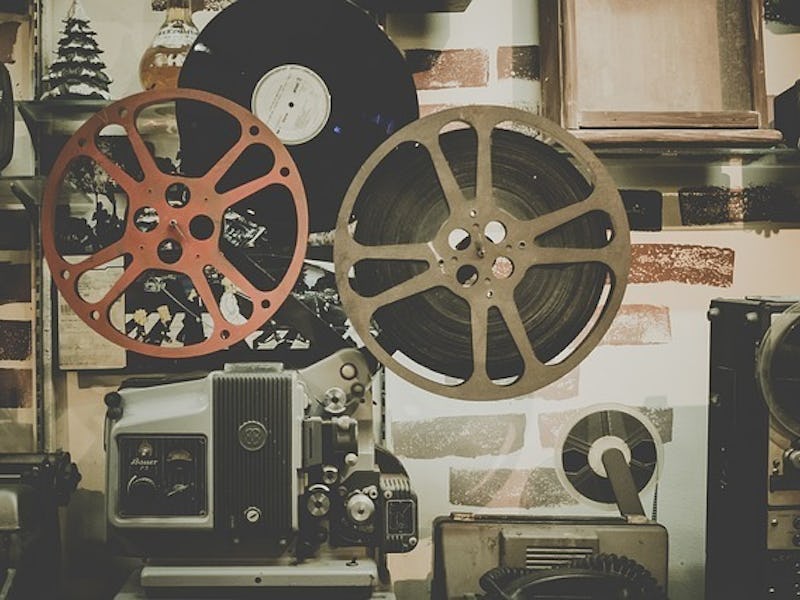Science Says You Should Take Your Dates to Horror Movies
Getting a second date is hard, but science can help.

Have a date coming up? Grab tickets to a horror movie — science says it’s probably your best shot at getting a second date. Thanks to the way that our bodies and mind process physiological and neural responses and emotion, movies that evoke a strong response in viewers are great for creating strong emotional experiences, even if they’re seemingly unrelated to the film itself.
Though humans are capable of feeling and processing a great many complex emotions on a cognitive level, the physiological responses our bodies experience in relation to strong emotions are actually quite similar, so the feeling of fear can easily overlap or be confused feeling attracted to someone or even falling in love.
Professor Javid Sadr describes this phenomenon as a kind of confusable arousal. And though colloquially, “arousal” may seem like a loaded word, it’s the best way to describe the physiological and neurological response that accompanies the experience of true emotion. Arousal goes beyond adrenaline or epinephrine — it’s your body’s measurable response to stimuli and includes things like increased heart rate, increased blood pressure, flushed skin, and dilated pupils.
Adrenaline responses take longer to kick in than your body’s neural and physiological responses, which happen almost instantaneously. And though we tend to describe things that we’re feeling, those physiological responses are imperative to actually experiencing an emotion.
“Any time you’re feeling any kind of emotion strongly … there will always be some measurable bodily response,” says Sadr. “You’re not really experiencing an emotion unless there are some changes in your bodily processes, physiological processes.”
Though the common sense idea of emotion suggests that our internal response to something dictates our physical or physiological reaction, it’s incorrect. Far closer to the truth is something called the James-Lange theory, which posits that its our physiological response that takes place first.
Sadr illustrates this idea with an example of a bear in the woods. Our very first response isn’t thinking that we’re scared — our bodies are actually much quicker to respond, and that physiological and neurological response informs our experience of the emotion. Because we see the bear, we assign that response to fear.
So how do we go from bears to horror movies?
“A lot of the bodily response ends up being kind of generic,” says Sadr. “It’s not completely generic, but the bodily responses that you see to something like anger and fear, there’s a lot of similarity in them.”
Sadr describes it as “clusters of emotion.” Bodily responses aren’t totally the same, but they have commonalities, which makes them confusable. Our bodies don’t feel emotions, they feel physiological responses. It’s our brains that are responsible for deciding how to decipher and decide what we’re feeling.
“The extent to which you have an emotional response is really tied to having an arousal change,” says Sadr. “The extent to which you label it as anger versus happiness versus sexual arousal versus disgust is tied to what in the environment you can look at to help label and understand that emotion.”
Once we’re in the thick of those responses, things get really interesting.
Sadr points to a 1974 study by Donald Dutton and Arthur Aron that was based on the idea of the “misattribution of arousal.” In the study, an attractive female confederate (someone acting in the study) approached a number of young men to take a survey on both solid, decidedly not frightening ground, and in the middle of a rickety suspension bridge famous for being pretty scary. The subjects were asked several questions, but the real test came when the woman gave the men her phone number, asking them to call her to talk more about the study.
More of the men who were approached on the suspension bridge called the woman than those who were approached on safer ground. The bridge had elicited a physiological response, but because our brains look for somewhere to assign that response, the subjects may have found themselves tying a physiological response to attraction, rather than fear.
Horror movies are designed to elicit an arousal response. The jump scares, the creepy imagery, and the things you can’t quite unsee are all there for the purpose of making your heart beat faster. Films are supposed to make us feel something, and as much as we might attribute those feelings to great writing, acting, and design, particularly when it comes to horror movies, our responses are a result of filmmakers manipulating our physiological responses.
“The movie is going to create heightened arousal in the viewer,” says Sadr, “and being with a potential object of sexual attraction allows that arousal to be diverted and relabeled.”
When we’re watching a horror movie, we know that the monsters, murderers, and creepy kids aren’t real, but our bodies still react. And so it’s quite easy for our brains to reassign that response as an emotion tied not to the film and the fear that is inherently and obviously fake, but to the person we’re with.
“That level of terror and level of fear could instantly get relabeled, at least unconsciously, as attraction to the other person,” says Sadr.
Arousal responses can also linger, meaning that once you’re out of theater, the effects of those neural and physiological responses might stick around. Without the horror movie as an immediate explanation for the arousal, the brain may end up finding that the most logical explanation for the arousal is attraction to another person.
So next time you’re planning a date with someone you like, consider snagging some tickets to a scary movie. Science says it might be your best shot for getting a second date.